Fireworks displays are a sign of celebrations of important events worldwide, and knowing how to photograph fireworks well means you will always have those great memories immortalized. For brief moments, we are fascinated and enamored with their brilliance before they fade away forever. With a handful of basic starting points, equipment, and essentials, one can capture these moments using a digital camera giving life and longevity to these uplifting moments. Fireworks photos are simply stunning! Even if you’ve never tried photographing fireworks displays, it’s relatively easy to do using the information presented below.
So, shooting fireworks effortlessly is not such a cumbersome task!
Equipment & Essentials For Photographing Fireworks
As photographers, when learning how to photograph fireworks, you should know some really important things – you’ll need a tripod and a cable release for your camera.
These can be fairly inexpensive gear (if you don’t already have one or both). The stability of a tripod while standing off to the side as throngs of spectators move about is of paramount importance to the final image quality.
The cable release is as equally important for image quality as it is for timing. You need to avoid camera shake.
The cable release also lets you watch the show while the camera and your thumb do the work – neat!
Photographing fireworks doesn't require any expensive gear, so sit back and relax!
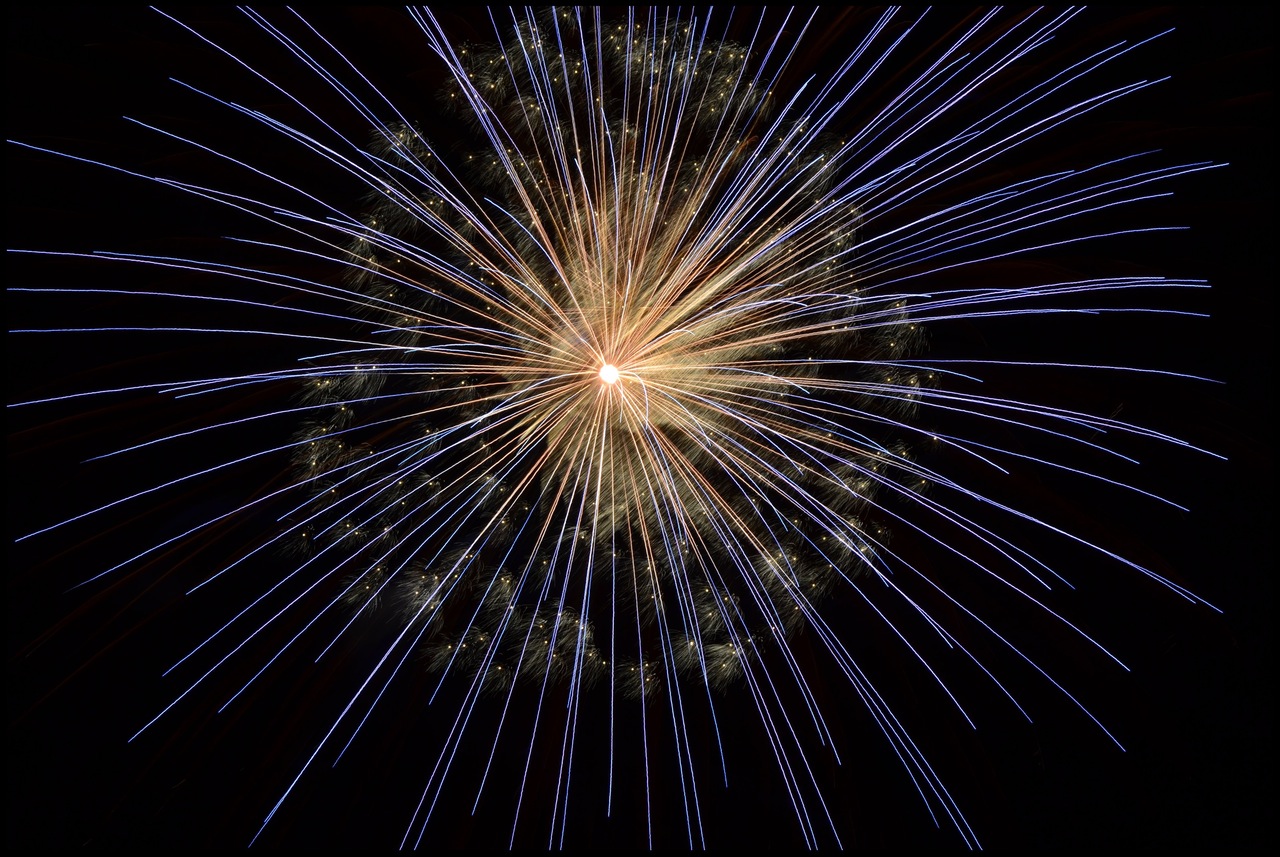
When Learning How To Photograph Fireworks, Be Ready!
Look at online maps; call the committee responsible for hosting the fireworks, and talk to people like traffic control officers when you arrive early at the site.
You’ll have a better guess at which lens and starting focal length you’ll need to capture as much fireworks action as possible. It goes without saying that you want to factor setup time into your shoot.
When possible, try to place something static in the frame for a point of reference to Earth. For example, trees, architecture, a background landscape feature, anything to add to the composition of the shot.
Important Elements To Consider In Fireworks Photography:
- Timing the launch of the firework
- The firework's ascent
- The break in the sky
- Finally, the downward-curving trails under gravity will become crucial through the evolution of the fireworks show
Top Tip!
Set up at late dusk so your eyes can see the landscape features.
Auto Focus Or Manual Focus For Fireworks Photos?
I recommend going full manual mode but starting with autofocus [AF] on the lens. For the first one or two fireworks, use the camera to set your focus using AF – especially when you're just starting to learn how to photograph fireworks.
Chimp the display and check the sharpness and focus. If good, quickly but carefully set the lens to manual focus [MF] so it doesn’t keep attempting to re-focus throughout the show.
Note: Every 6 or 7 minutes of fireworks, repeat the AF to MF procedure. Why? As the night air cools down and the battery and digital sensor heat up after sunset, your focus may change due to thermal expansion and contraction.
The wind direction may change enough to push the display ahead or behind your depth of field range. Keep your targets in focus!
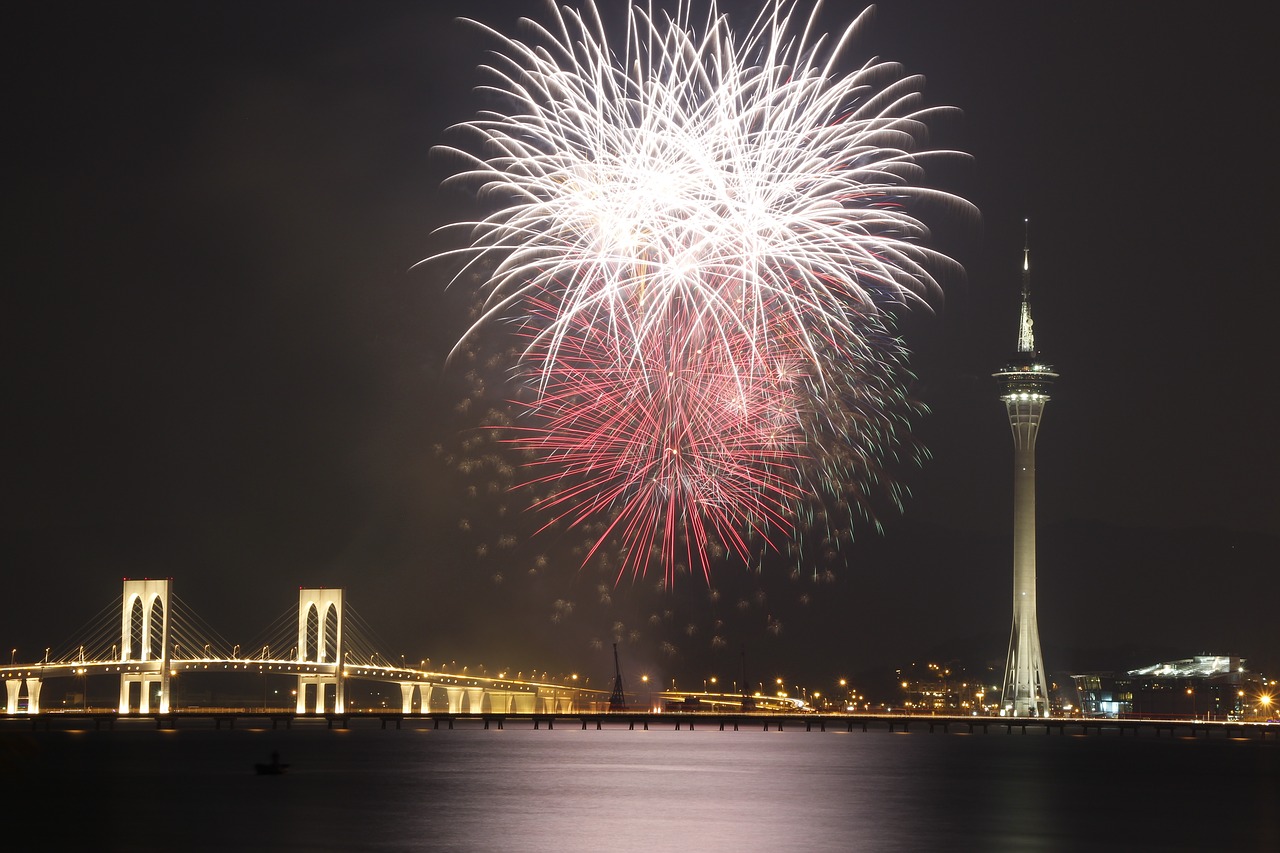
To Begin, Try The Following Setup
- Auto White Balance [AWB] – shoot in AWB Mode to make things easier on yourself. Fireworks displays vary in intensity, color, and light density against a relatively black background. I’m not sure there’s a good one-size-fits-all approach outside of AWB Mode, even trying to shoot one fireworks sequence in custom and using that for the rest of the show. I advise resigning yourself to some software post-processing work and going with the AWB. I don’t want to use software to add sharpness in post-processing. I’m not too fond of the fringe created where burning trails cross one another in the final.
- Noise Reduction [NR] – turn it off. It won’t play a key role as these exposures are relatively short, and once the fireworks break in the sky, there will be plenty of light in the scene contrasting with the black background of night. Your sequential firing of the shutter will be much faster, preventing you from missing too much of the show while the NR cycle runs its course.
- Aperture f/11 – this aperture setting provides a good balance between depth of field and exposure value – it’s a good starting point. Firstly, fireworks are 3D objects with a volume. So, you want to use an f-number adequate to keep the entire shell of exploding, burning chemicals in sharp focus from front to back or inside the depth of field. It’s also worth noting that f/11 is a good aperture to allow bright light in fast enough to register on the sensor but rapidly fall off to the black background of the night sky.
- ISO 100 – this is a general-purpose ISO Value. It’ll keep the burning trails of the fireworks bright and sharp enough and reduce the noise generally associated with long exposures at night.
- Shutter Speed – 4.0 seconds – a general-purpose shutter speed setting that may need adjusting based on field conditions and ambient light. You have to avoid a camera shake!
- Lens – If starting with a kit lens [18-55mm], set somewhere between 18-35mm. The lens and focal length will highly depend on how close or far your photographic location is from the fireworks launch site. You may need a smaller, lower focal range if you’re too close. The converse is true. The important part is that your focal length will be the controlling parameter for how much or how little the fireworks display fills your framed shot at your relatively fixed location.
Photographing Fireworks – Setup Review
- Use a tripod
- Always use a cable release
- Aperture = F11 – Work wider from this point
- ISO = 100
- Shutter speed = 4 seconds (use bulb mode)
- Focal Length 35mm (crop Sensor) as a starting point
- Do some homework and plan. Enjoy the show!
Further Tip!
Trying to master how to photograph fireworks inside urban centers and cities requires a little more patience and tweaking the technical settings because of the background light of the surrounding environment.
Good luck, and have fun!
Further Resources
- Photographing Fireworks is Easy With These 6 Steps (Along With 10 Brilliant Examples) by Jason D. Little
- Fireworks Photography Book
- Other Low Light Photography Scenarios
Further Learning
A solid blog post like this one will get you started learning how to photograph fireworks and get some great results. It does have its limitations, though. If you want to dive deep into the art of fireworks photography (which is a pretty deep rabbit hole), you might want to get a more in-depth guide. The best around at the moment is Richard Schneider's ebook on the topic (and there's usually a July 4 discount) so take a look at it here.

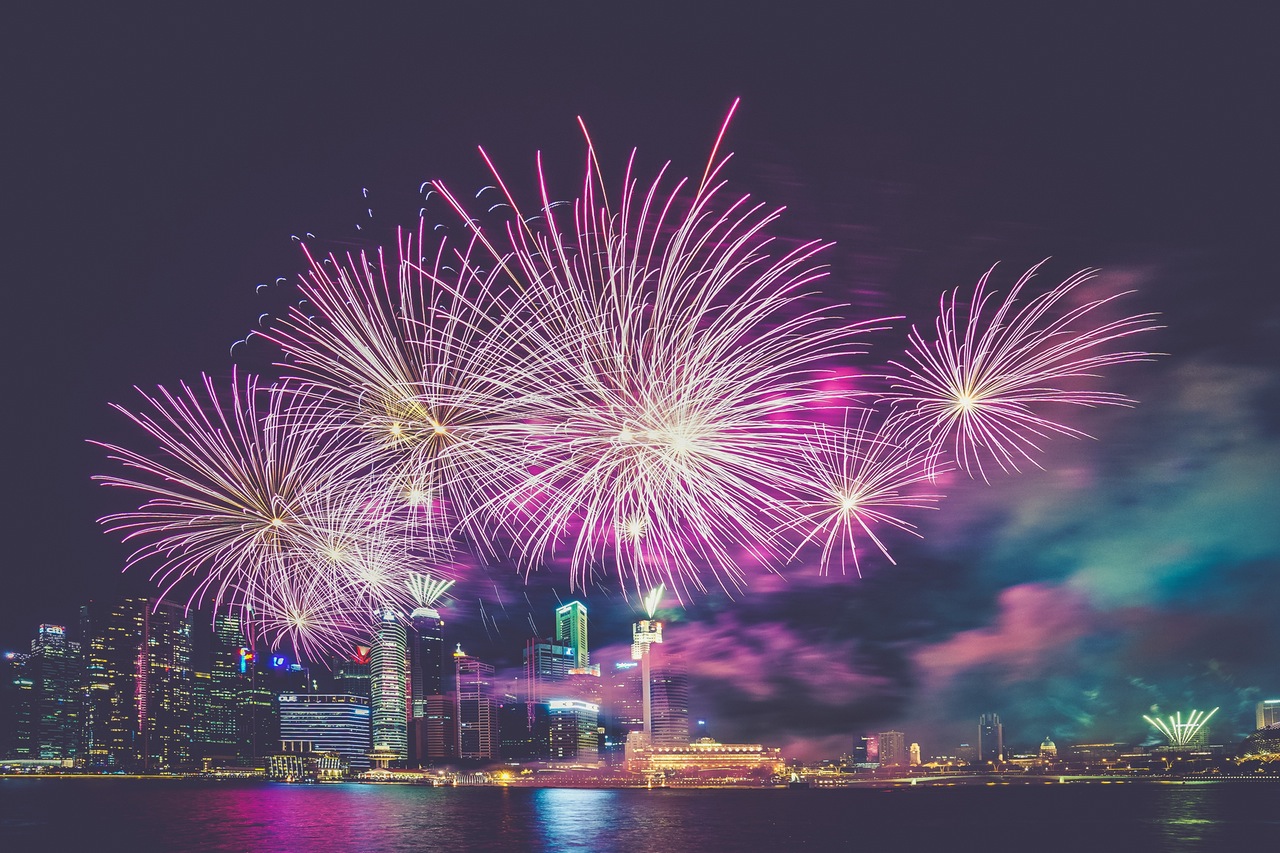
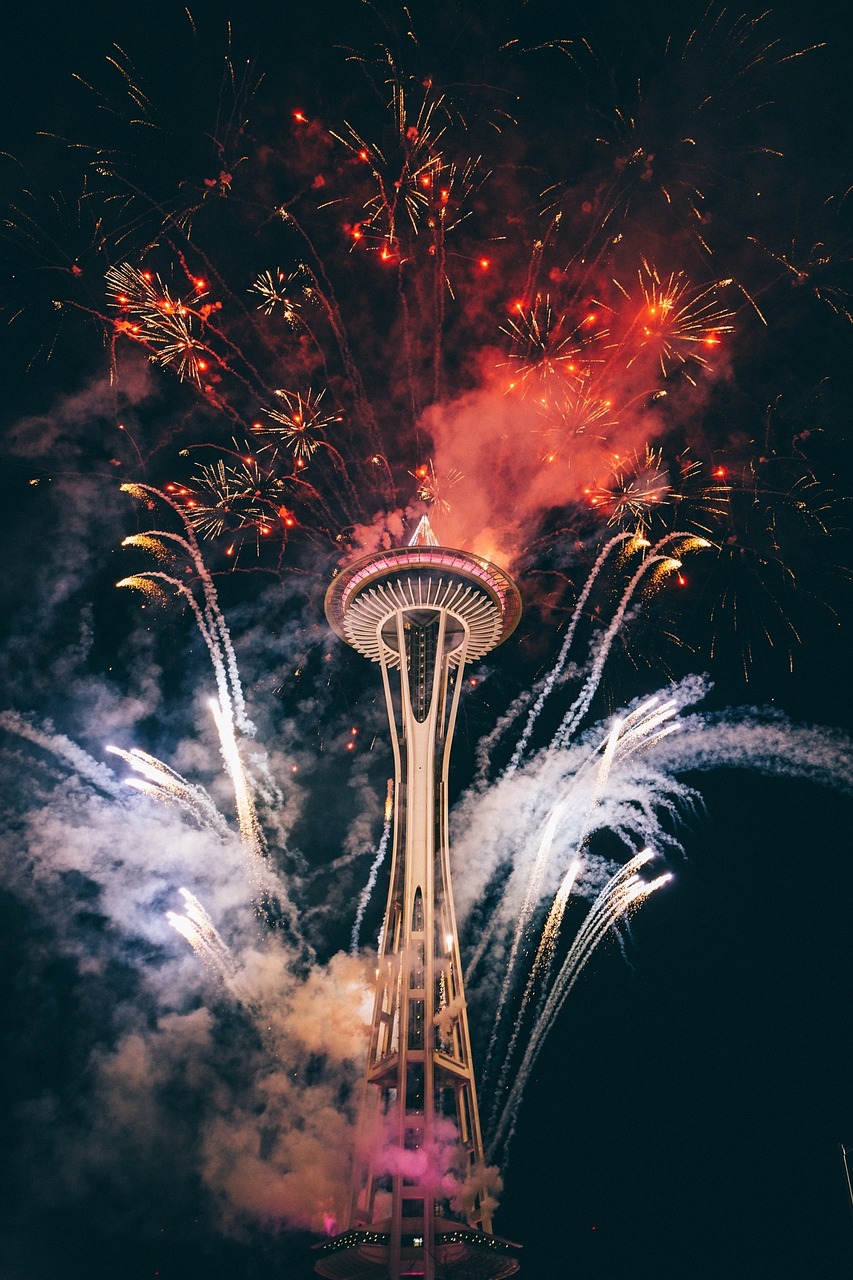


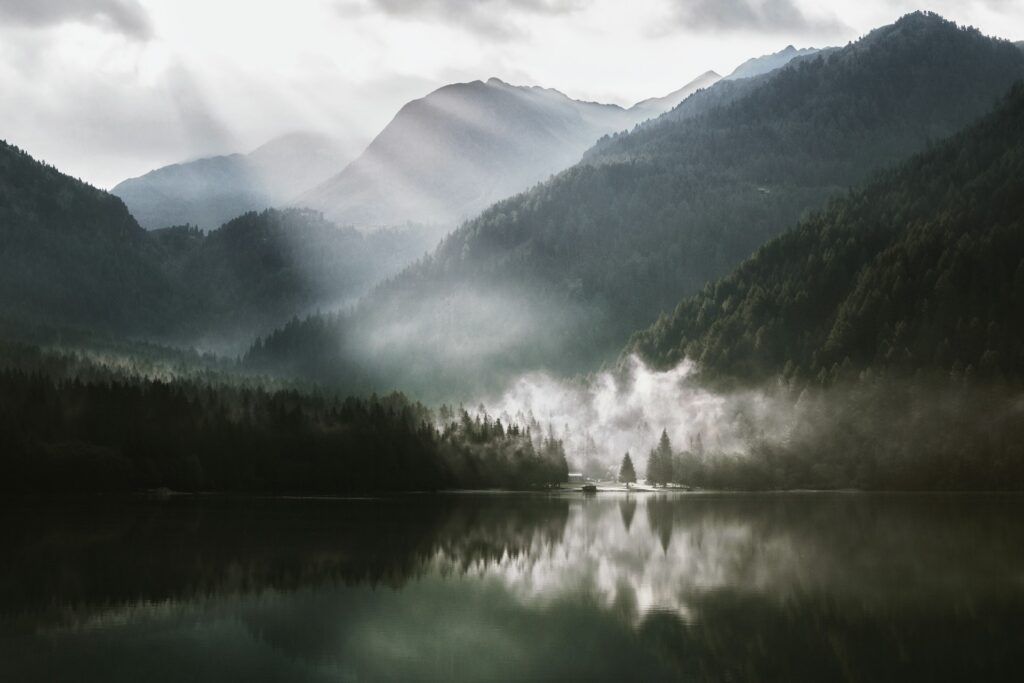


11 Comments
Nice one, Jay. Look forward to more. Now all I have to do is find a party.
Good article.
…thought its was funny almost all the photos were of lightning when the subject is Fireworks, but at least the philosophy behind shooting either are the same 🙂
Yeah, that was my fault – I copy and pasted the code for the lightning photos for a different article! Arghgh!
I haven’t done fireworks for a few years, so I might bring along my camera and tripod this 4th of July. Great reminders here. I’ve never done just 4 seconds, but I’ve set my Canon to ‘bulb’ so that I can time the photograph manually.
Dang, I’m still in Bangkok on July 4th. Nice one. Thanks!
Am so happy to have this guide…just hope I can capture some decent shots with my little Canon A720 IS. Every little tip helps so thanks a lot!
I have shot a lot of fireworks over the past ten years, and you advice is pretty good. I usually bounce between f/8 and f/16, keeping it between 1.5 sec to 4 sec. The tripod is a must, but I rarely use a remote (I travel pretty light) and prefer to use the timed shutter release. Good post.
Great simple, straightforward tips. Thanks very much.
But, Lake Benson Park is in Garner, NC.
Touching images
Do you guys have a cd or dvd
Please let me know
Very straight forward and easy instructions to understand.